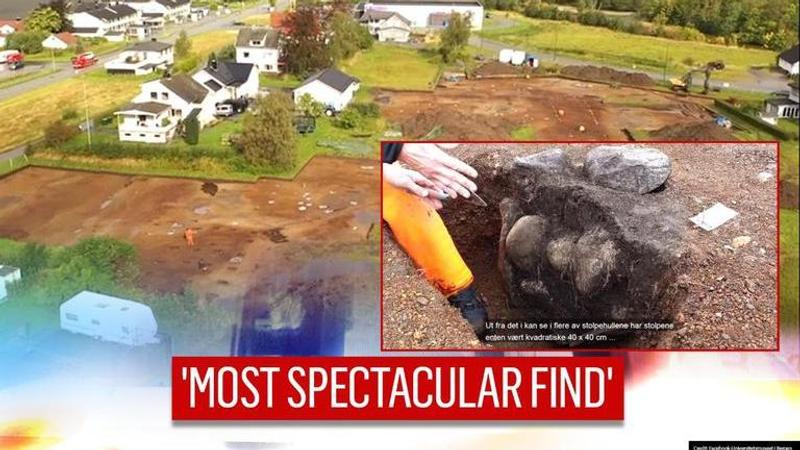Published 20:45 IST, October 10th 2020
1,200-year-old Norse Temple from ancient Iron Age unearthed by archaeologists in Norway
The University Museum of Bergen have unearthed ancient Iron Age settlements, and a 1,200-year-old Norse temple dedicated to Thor and Odin at Ose farm in Ørsta.

Archaeologists at The University Museum of Bergen have discovered the ancient Iron Age settlements, and a 1,200-year-old pagan temple dedicated to Thor and Odin at Ørsta municipality, Western Norway. A large area in the region was excavated that revealed several old homes from the Late Iron Age and Early Middle Ages. However, the excavations that led to finding a Viking Age ancient 'god house’ where sacrifices to Norse gods were offered has stunned archaeologists. “The most spectacular find from the excavation is a building, situated at the western end of the site,” the museum said in an online post.
The ancient nordic temple dug out is approximately 14 meters long and 7 meters wide, and is supported by sturdy wall posts, showing a bow walled structure with a rounded end. The interior of the building lacks the typical double rows of roof-supporting posts in its construction, commonly observed in the contemporary three-aisled longhouses, the archaeologists revealed. Further, the structure comprised of four large posts situated 3 x 3.5 meters apart.
“A handful of Southern Scandinavian buildings from central Late Iron Age sites such as Uppåkra in Southern Sweden and Tissø in Denmark display the same construction as the building at Ose,” the museum explained.
Although, the discovered temple is interpreted as a pagan temple owing to its scale which is vast compared to the settlement at Ose pales. An area measuring 8000 m2 was investigated near the farm 'Ose'. Earlier, it was found in a survey that most buildings in the region belonged to prehistoric periods, although no radiocarbon dates were mentioned.
"Evidence of the worship of the old Nordic gods is previously known elsewhere in Norway, but this is the first find of a well-preserved temple, ” archaeologists said.
“Design of the houses testifies that there are both buildings from the former iron age (500-0 f. Kr) and from the younger iron age to medieval (575-1500th. Kr),” they added.
Mention in Icelandic Sagal literature
The pagan 'Gudehov', the iconic temple, nearly 14 meters long and 7 meters wide, was discovered in the western part of the region. The building comprised of a large square room measuring 3 x 3,5 meters, and six heavy roofing posts with tower-like construction. “The same house construction with towers is known from a handful of Southern Scandinavian buildings from the younger iron age,” archaeologists revealed. The temple has a wide mention in the Icelandic Sagal literature, and are called 'godhovs' where religious cult linked to Odin practiced rituals. “Images of Odin from the middle of the iron age and the hooves appear on the residence,” the museum said.
(Images and Quotes Credit: Facebook/Universitetsmuseet i Bergen/ Arkeologi i Vest group)
Updated 20:45 IST, October 10th 2020









